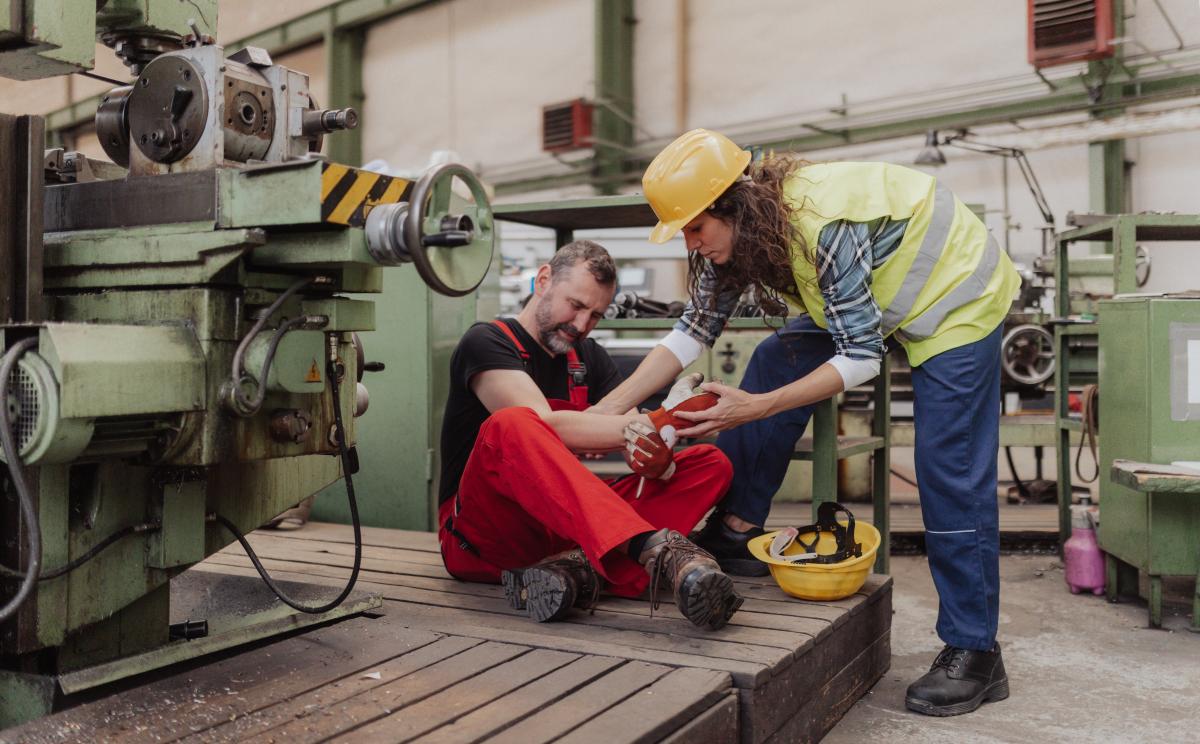
Promoting Safety Culture in the Workplace
A strong safety culture is the foundation of a healthy and productive work environment. In today's fast-paced and competitive world, businesses must prioritize the well-being of their employees. According to Occupational Health & Safety, “Without a comprehensive safety plan, a facility might be unintentionally putting the people working hard for them at risk of injury.“
Promoting a safety-first culture reduces accidents and injuries and enhances employee morale, productivity, and overall organizational success. In this blog, we will explore the importance of safety culture in the workplace and discuss practical steps to foster a culture where safety is everyone's responsibility.
Understanding Safety Culture
Safety culture refers to the attitudes, values, beliefs, and behaviors regarding safety within an organization. The collective mindset shapes employees' perceptions of and prioritizes safety in their daily tasks. Occupational Health & Safety says, “Engagement and participation are necessary ingredients across any business when it comes to safety.” A positive safety culture involves the active involvement of management, supervisors, and employees at all levels. It requires continuous improvement and a willingness to learn from mistakes and near misses.
The Importance of Safety Culture
- Employee Well-Being: A workplace with a strong safety culture demonstrates a genuine concern for its employees' well-being. Employees who feel safe and cared for are likely to be engaged, loyal, and committed to their roles.
- Productivity and Efficiency: A safe work environment minimizes the likelihood of accidents and injuries, leading to fewer disruptions and less downtime. This, in turn, increases productivity and efficiency, benefiting both the organization and its employees.
- Reputation and Brand Image: Companies with a robust safety culture earn a positive reputation, attracting top talent and building trust among customers and partners. A solid safety track record demonstrates responsible corporate citizenship.
Practical Steps to Promote Safety Culture
- Leadership Commitment: Safety must be a core value high-level executives and managers embrace. SupplyHouse Times states, “A culture of safety needs to be championed at all levels of the organization to ensure that everyone is aware of the importance of safety and takes the necessary steps to prevent accidents.” Leadership should actively participate in safety initiatives, allocate resources for safety training, and set an example by adhering to safety guidelines.
- Training and Education: Regular safety training is crucial to equip employees with the knowledge and skills to identify hazards and mitigate risks. Training sessions should be interactive, engaging, and relevant to the specific roles and tasks of the employees.
- Open Communication: Encourage open and transparent communication about safety concerns. Employees should feel comfortable reporting near misses, hazards, or unsafe practices without fear of retribution. According to Occupational Health & Safety, it’s important to make sure your team knows not to look the other way when they see areas for improvement but to feel confident addressing any moment where something looks unsafe or there would be a safer way to move forward. Companies should even consider implementing anonymous reporting systems if necessary.
- Recognition and Incentives: Recognize and reward individuals or teams that exemplify outstanding safety practices. Positive reinforcement reinforces the importance of a safety culture and motivates others to follow suit. Regular Audits and Inspections: Conduct routine audits and inspections to identify potential hazards and assess the effectiveness of safety protocols. Use these findings to make data-driven improvements to safety processes. Calls between management and leadership should occur on a regular basis to help prevent relevant information from being told to the people who need it the most, employees.
- Continuous Improvement: Safety culture is not static; it requires continuous improvement. Regularly review safety procedures and seek employee feedback to identify improvement areas.
Promoting a safety culture in the workplace is not an overnight task; it requires dedication, commitment, and collaboration from all organization members. By investing in safety training, encouraging open communication, and recognizing safety efforts, companies can create a work environment where employees feel valued, protected, and empowered. Safety is not just a checklist but a shared responsibility that lays the groundwork for a thriving workplace. When employees know their well-being is a top priority, they are more likely to perform at their best and contribute to the organization's long-term success.
At Carrillo Injury Law, we work with injured employees to determine the best legal options for workplace accidents. Still, we understand the importance of businesses prioritizing safety culture in the workplace to prevent these incidents from happening. Have you been injured while working? Schedule a free consultation today by calling 352-371-4000 or emailing us at office@carrilloinjurylaw.com.
Sources
https://ohsonline.com/articles/2023/06/22/building-a-safety-culture-to-enhance-workplace-safety.aspx
https://www.supplyht.com/articles/105378-eye-on-safety-making-safety-a-part-of-your-culture
- Log in to post comments